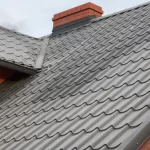
Roof Insulation is a great way to lower your energy bills and reduce your carbon footprint. It also helps to manage temperature and moisture, which can both affect the growth of mold. Although the cost of roof insulation may be higher than other types of home improvement projects, it will save you money in the long run. In addition, it can reduce your energy bills significantly.
There are two types of roof insulation. One type is made from fiberglass, which is lightweight and has a high R-value. Another type is polyisocyanurate, a closed-cell foam that is bonded to foil or glass. Both types of foam have their advantages and disadvantages. While fiberglass provides high insulation, it is expensive and contains CFCs, which are known to cause ozone depletion.
A good way to determine how much roof insulation you need is to get a roof insulation assessment. This test will reveal what type of insulation is best for your home. You can also use a climate map to determine the best insulation for your home. The International Code Council offers an interactive map that shows minimum recommended R-values for different climates in the U.S. Depending on the climate and type of insulation you choose, you may also want to consider an energy audit test. This is a simple, inexpensive way to assess the effectiveness of your home’s insulation and determine where improvements are needed.
When selecting a roof insulation material, consider the R-value and thickness. Both are directly linked to the material’s ability to resist heat and cold. R-values can vary widely, so be sure to consider the specific issues of your roof. Additionally, consider whether you’ll be living in the home for a few years or for the rest of your life.
While fiberglass roof insulation is fire-resistant, it loses 50% of its R-value when temperatures drop below freezing. In addition, it is flammable and can cause lung cancer. Fortunately, there are safer options, such as cellulose and radiant foil barrier. These options are inexpensive and can meet your needs while minimizing your carbon footprint.
Choosing the right roof insulation is one of the most important home improvements you can make. It can improve the efficiency of your home and increase its value. But be sure to install your insulation over the joists and over vents to avoid any problems with condensation. You can even consider insulating the attic if you’re planning to finish it.
Other forms of roof insulation include mineral wool, fiberglass, and rock wool. These materials are made from natural minerals that are plentiful in the earth. Mineral wool and stone wool are flexible and can be applied without damaging finishes or structures. These materials are similar to loose-fill insulation in that they can be blown into the attic cavity.











